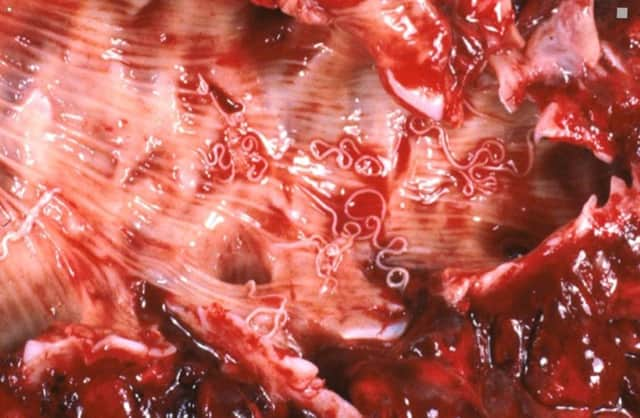Rain at last'¦ but are you getting more than what you've bargained for?


However, farmers need to be aware that wet weather also promotes the release of lungworm larvae from faecal pats, which could result in outbreaks of hoose in cattle.
Lungworm Life Cycle
Following ingestion, the infective larvae migrate and develop to become adult parasites within the major airways of the lungs. The adults produce eggs which hatch and develop into L1 larvae. The larvae are then coughed up, swallowed and passed in the faeces. L1 larvae develop in the dung pat to infective larvae which are then spread onto herbage with the help of heavy rainfall or wind, utilising a fungus that grows on faecal pats. Infective larvae are then ingested by cattle.
Clinical Presentation
Advertisement
Advertisement
Typically, clinical signs of hoose appear two-four weeks after ingestion of large numbers of infective larvae.
Early clinical signs include an increased respiratory rate at rest and frequent coughing after short periods of exercise. Severe larval challenge causes reluctance to move. Affected cattle stand with their head down, neck extended and cough frequently; examination and forced movement may precipitate severe breathing difficulties and death. These severe signs may only be present in a small percentage of cattle, but treatment of all cattle at risk is essential.
Diagnosis
Diagnosis is based upon clinical examination or demonstration of larvae in fresh faeces. Laboratory diagnosis can be challenging, as it takes three-four weeks after the ingestion of infective larvae before L1 larvae can be demonstrated in fresh faecal samples.
On post mortem examination worms can be seen in the bronchi and bronchioles.
Economic Losses
Advertisement
Advertisement
In growing cattle losses can result from sudden death in severely affected cattle. Less severely affected cattle suffer a marked loss of body condition (up to 20% of their bodyweight) and take a long time to recover resulting in extended periods to slaughter (up to six months).
Losses in severe lungworm outbreaks in growing cattle can average £50-£100 per head. In the dairy herd, infection of susceptible cattle can result in a dramatic reduction in milk yields of up to 50%, with possible deaths. Lost milk production could reach £3 per head per day with recovery taking 10 to 20 days after treatment.
Treatment
Prompt anthelmintic treatment is essential and is best administered to cause minimal stress.
CYDECTIN® 0.5% Pour-On for Cattle contains the unique active ingredient moxidectin. CYDECTIN Pour-On rapidly kills the parasites infecting the animal and is then stored in the fatty tissues and slowly released back into the bloodstream to go on killing new infections as they are picked up. It is this slow release that gives CYDECTIN Pour-On its persistent activity. CYDECTIN Pour-On has a persistent effect in preventing re-infection with lungworm for six weeks after a single dose.